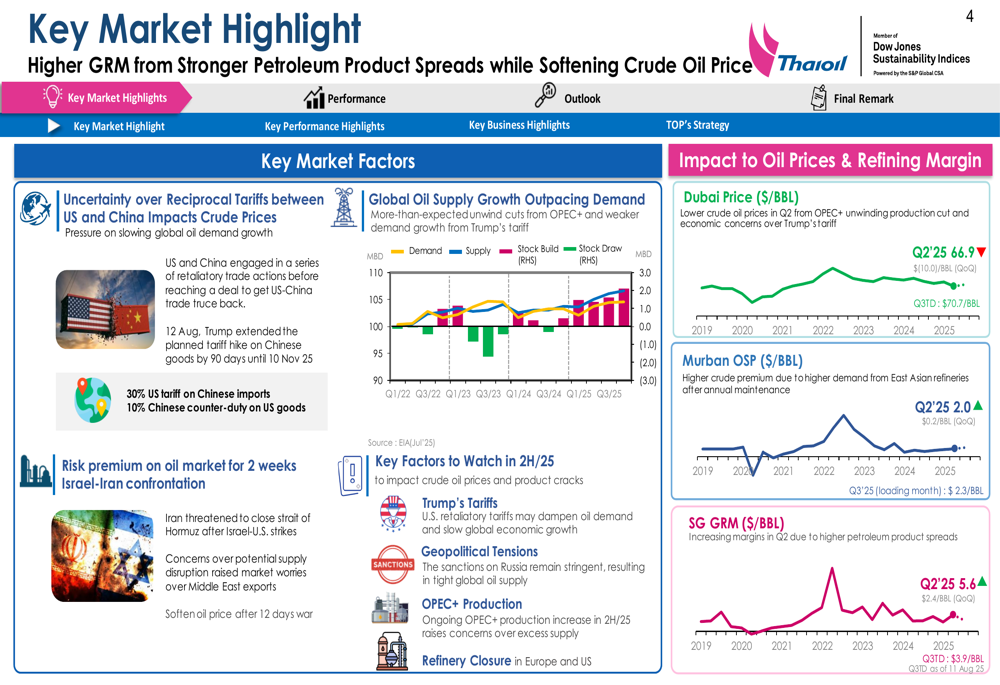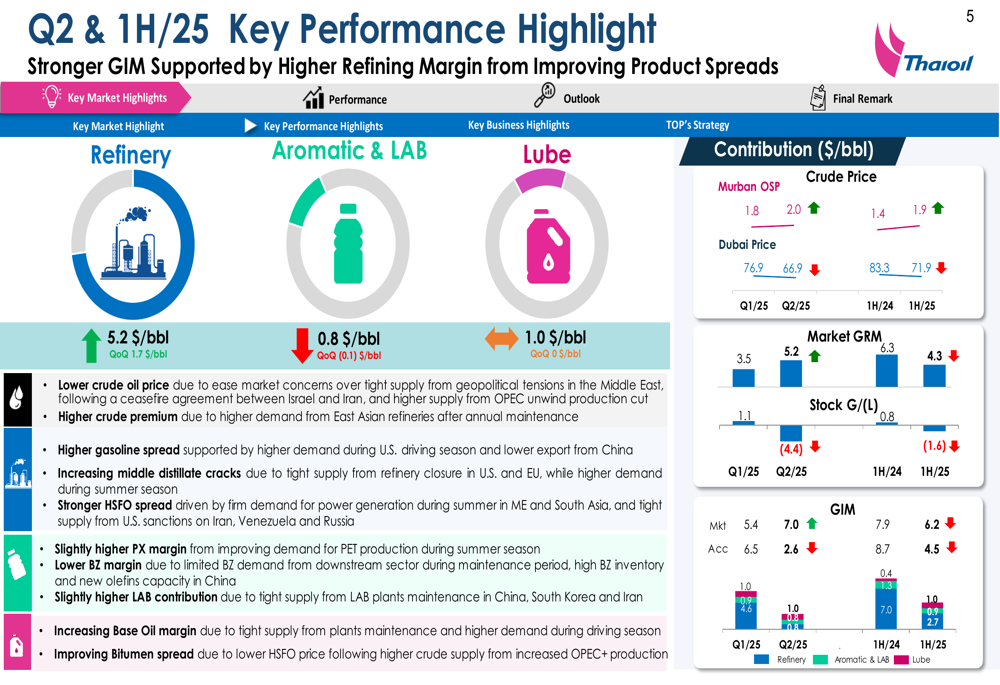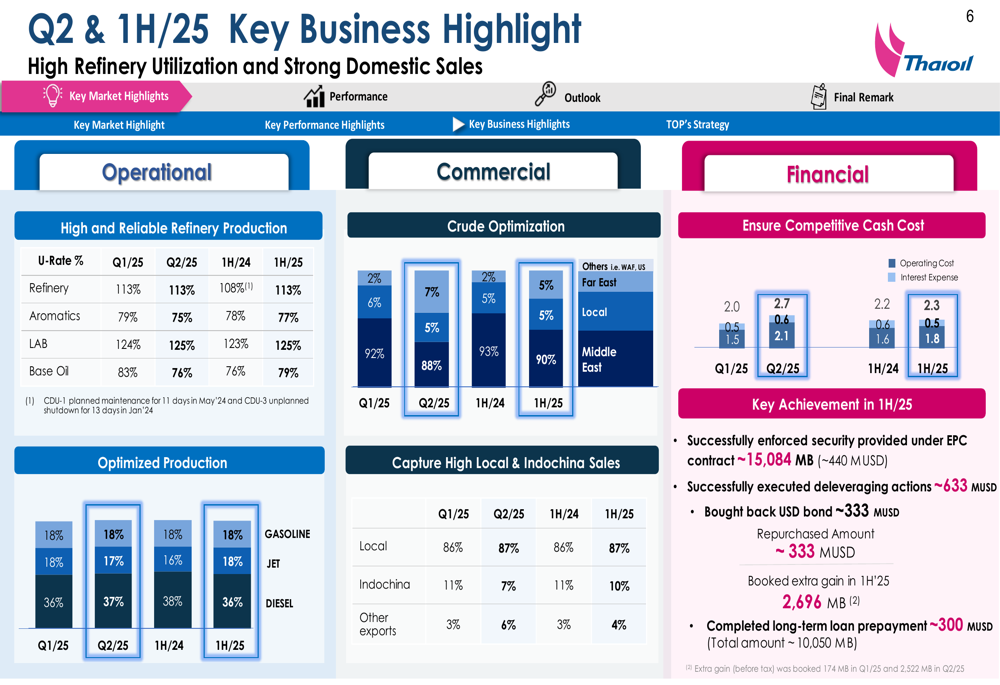Oracle launches unified health data exchange console
Introduction & Market Context
Thai Oil PCL (SET:TOP) presented its Q2 and first half 2025 results on August 18, 2025, highlighting improved performance driven by stronger petroleum product spreads despite softening crude oil prices. The company’s stock is currently trading at 32.00 baht, down 0.25 (-0.78%) from its previous close, within a 52-week range of 21.00 to 55.50 baht.
The global oil market during Q2 2025 was characterized by supply growth outpacing demand, creating downward pressure on crude prices. This market dynamic, coupled with geopolitical tensions, particularly between Israel and Iran, created a complex operating environment for refiners.
As shown in the following market highlight slide, Dubai crude averaged $66.9 per barrel in Q2, while the Murban OSP premium stood at $2.0 per barrel, and Singapore gross refining margins (GRM) reached $5.6 per barrel:

Quarterly Performance Highlights
Thai Oil reported stronger gross integration margins (GIM) in Q2 2025, primarily supported by higher refining margins resulting from improving product spreads. The company’s performance analysis reveals that the refinery segment made a positive quarter-on-quarter contribution of $1.7 per barrel, while the Aromatics & LAB segment saw a slight decline of $0.1 per barrel. The Lube segment’s contribution remained unchanged quarter-on-quarter.
The following performance highlight slide details how each business segment contributed to the company’s overall results, with particular emphasis on the impact of lower crude oil prices and improved gasoline spreads:

Operational Achievements
Thai Oil maintained exceptional operational efficiency during the quarter, with refinery utilization rates holding steady at 113% in both Q1 and Q2 2025. This high utilization rate demonstrates the company’s ability to maximize production capacity despite market volatility.
The company also reported strong domestic and regional sales performance, particularly in gasoline, where it captured 86-87% of local and Indochina markets. This focus on regional markets appears to be a strategic priority for Thai Oil as it navigates global market uncertainties.
As illustrated in the business highlights slide, Thai Oil’s operational success extends beyond utilization rates to include crude optimization and other key achievements during the first half of 2025:

Market Outlook and Forward-Looking Statements
Looking ahead to the second half of 2025, Thai Oil identified several key factors that could impact market conditions. These include potential tariffs under the Trump administration, ongoing geopolitical tensions, OPEC+ production decisions, and global refinery closures.
The company noted that uncertainty over reciprocal tariffs between the US and China has already impacted crude prices, while the risk premium in the oil market related to the Israel-Iran confrontation lasted for approximately two weeks during the quarter.
Thai Oil’s presentation suggests that while global oil supply growth continues to outpace demand, creating some headwinds for crude prices, the company remains well-positioned to capitalize on stronger petroleum product spreads through its high utilization rates and strong regional market presence.
Investors should monitor how these market factors develop in the coming months, as they will likely influence Thai Oil’s performance for the remainder of 2025. The company’s ability to maintain its operational efficiency and market position in Southeast Asia will be crucial to its continued success in navigating these complex market dynamics.
Full presentation:
This article was generated with the support of AI and reviewed by an editor. For more information see our T&C.
